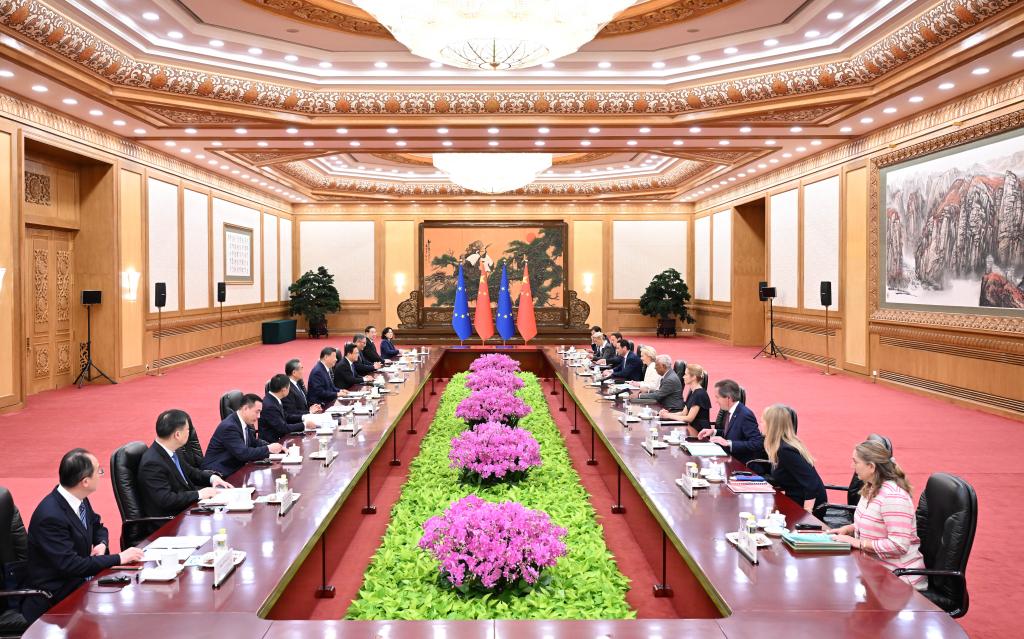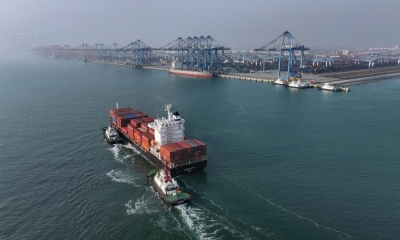肯尼亚选手包揽郑开国际马拉松男女冠军

A sound and stable China-EU relationship not only works to the advantage of both sides but also brings benefits to the whole world.
The 25th China-EU summit?that?ended with blissful note of all-weather cooperation on July 24, has charted a fresh blueprint of synergic collaboration that champions cooperation?instead?of?rivalry, free?trade instead of protectionism, multilateralism instead of unilateralism, as well as shared interests instead?of?zero-sum game.
Amid celebrations of China-EU 50 years anniversary of diplomatic ties, the summit also nurtured a deep sense of co-existence with differences offering the world an empirical glimpse of working relationship that stays unhurt in turbulence.
Frankly speaking,?China and European Union?belong to different political ecosystems, governance dispensations, economic mechanics and social backgrounds. Given the apparent estranged outlook, they explored many common grounds with mutual understandings and clinched the success of development and growth.
During the summit, Chinese President Xi Jinping called upon EU leadership to keep bilateral relationship growing in right direction and work together to usher in it even brighter next 50 years.
This year marks the 50th anniversary of the establishment of China-EU diplomatic?relations?and the 80th anniversary of the founding of the United Nations, Xi Jinping said that China-EU relations have come to another critical juncture in history.
“China and the EU?are both?constructive forces for multilateralism and openness and cooperation. The more challenging and complex?the international situation becomes, the more China and the EU need to strengthen?communication, enhance?mutual trust, and deepen cooperation,” Xi said.
Over the past five decades,?the?two sides have established high-level dialogues in key areas and established more than 70 dialogue and cooperation mechanisms. Bilateral trade has expanded more than 320-fold over the past five decades, standing at $785.8?billion?in 2024, according to China’s General Administration of Customs.
Still there are frictions, but during the course of China-EU summit, the EU agreed to establish an enhanced mechanism for ensuring the supply of rare earth exports from China, after Beijing introduced curbs on such exports last year, causing production stoppages for European firms.
“We agreed … to have an upgraded export supply mechanism. In other words, if there are bottlenecks, this upgraded supply chain support mechanism can immediately check and solve the problem or the issue that is out there,” European Commission President Ursula von der Leyen told a press conference in Beijing.

According to the European Commission, China provides 98?percent?of the EU’s supply of rare earths, which are vital for clean technology, chipmaking and medical equipment.
China and Europe are deeply and closely connected economically. This closeness is not only reflected in trade and investment, but also in shared values as both sides pursue fair and free markets based on WTO rules and remain committed to resolving trade frictions and disputes through multilateral mechanisms and rules-based approaches.
The China-EU cooperation is based on?complementarity and mutual benefit,?which has been proved by the facts in the past five decades.?A sound and stable China-EU relationship not only works to the advantage of both sides but also brings benefits to the whole world. As the world’s second and third largest economies, China and the EU together account for about one-third of global GDP and roughly 30 percent of global trade. Whether China-EU relations can develop in a stable way not only affects the interests of both parties, but also bears on the prospects of economic globalization and the evolving multipolar world order.
Before the 25th China-EU Summit in the backdrop of their 50th anniversary of diplomatic relations, both sides cherish many mutual success stories that have helped underpinned their cooperation.
As a gesture of good will?and effective tool for people-to-people exchanges, China launched a 30 Days Visa-free Policy for many European nations including Andorra, Austria, Belgium, Bulgaria, Croatia, Cyprus, Denmark, Estonia, Finland, France, Germany, Greece, Hungary, Iceland, Ireland, Italy, Latvia, Liechtenstein, Luxembourg, Malta, Monaco, Montenegro, the Netherlands, North Macedonia, Norway, Poland, Portugal, Romania, Slovakia, Slovenia, Spain, and Switzerland.
The aim is “to facilitate the high-quality development of Chinese and foreign personnel exchanges and high-level opening up to the outside world,” Foreign Ministry spokesperson Mao Ning said at a briefing on the initial announcement made in last November.
Experts believe that both sides should focus on promoting two-way openness, expanding market access, supporting mutual investment and fostering a better business environment.

As the world’s second- and third-largest economies, China and the EU must view expanding mutually beneficial cooperation as a necessity. China’s comprehensive pursuit of Chinese modernization, commitment to high-quality development, and expansion of high-level opening up present historic development opportunities for European businesses.
The mutual direct investment has created?hundreds of thousands of local jobs?in both EU and China.?Meanwhile, China-EU collaboration on green and tech innovation is accelerating Europe’s digital and green transitions.
The annual trade volume has surged from $2.4?billion at the time diplomatic ties were established to $785.8?billion last year, while cumulative mutual investment stock has grown from nearly zero to around $260?billion. Meanwhile, cooperation in people-to-people exchanges and responses to global challenges has also yielded significant results. In 2014, President Xi made a historic visit to the EU headquarters, proposing the creation of four major partnerships – peace, growth, reform, and civilization – thereby bringing new meaning.
The China-Europe Railway Express acts as a “steel camel” caravan, reliably maintaining supply chains. It plays a crucial role in connecting manufacturing centers in China with European markets.
It operates on 73 routes, linking over 50 cities in China to 168 cities across 23 countries?in Europe. This rail transport offers a cost-effective alternative to sea and air freight, balancing efficiency and transit time. Recent improvements include fast customs clearance systems, reducing transit times by two to three days and cutting declaration costs by 20?percent. As the cumulative number of China-Europe freight trains has now exceeded 110,000, with the accumulative value of goods transported surpassing $450 billion.
In conclusion,?the China-EU relationship should never be dependent on, or constrained by any third party.?The comprehensive, constructive cooperation between China and EU will continue to make significant contributions to world economic growth and to the shared future of mankind.
The article reflects the author’s opinions, and not necessarily the views of China Focus.
 Facebook
Facebook
 Twitter
Twitter
 Linkedin
Linkedin
 Google +
Google +







